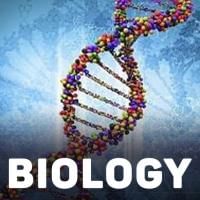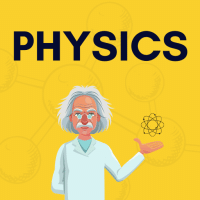NEET Exam > NEET Questions > Development of egg without fertilization is c...
Start Learning for Free
Development of egg without fertilization is called
- a)Polyembryony
- b)Parthenocarpy
- c)Parthenogenesis
- d)Adventive embryony
Correct answer is option 'C'. Can you explain this answer?
| FREE This question is part of | Download PDF Attempt this Test |
Most Upvoted Answer
Development of egg without fertilization is calleda)Polyembryonyb)Part...
Parthenogenesis is the development of egg directly from single egg without fertilisation
Free Test
FREE
| Start Free Test |
Community Answer
Development of egg without fertilization is calleda)Polyembryonyb)Part...
Parthenogenesis refers to the development of an egg without fertilization. This process allows the female to produce offspring without the need for male participation. Parthenogenesis can occur in various organisms, including insects, reptiles, birds, and some plants.
Types of Parthenogenesis:
1. Thelytoky: In thelytoky, the offspring are all female and develop from unfertilized eggs. This is the most common form of parthenogenesis and is observed in many insect species.
2. Arrhenotoky: Arrhenotoky involves the production of both male and female offspring from unfertilized eggs. This type of parthenogenesis is seen in some reptiles, such as Komodo dragons and certain species of lizards.
3. Automixis: Automixis is a type of parthenogenesis in which the egg undergoes meiosis but fuses with a polar body instead of a sperm. This process can result in offspring that are genetically identical or slightly different from the mother.
4. Apomixis: Apomixis is a form of parthenogenesis commonly observed in plants. It involves the development of an embryo from an unfertilized egg, followed by the formation of seeds without fertilization.
Advantages and Disadvantages:
Parthenogenesis offers several advantages to organisms. It allows for rapid reproduction and colonization of new habitats as there is no need to find a mate. It also ensures that all offspring are genetically identical to the mother, which can be advantageous in stable environments.
However, parthenogenesis also comes with its disadvantages. Since there is no genetic recombination, it limits the potential for adaptation to changing environments. This lack of genetic diversity can make populations more susceptible to diseases and other challenges.
Applications:
Parthenogenesis has been studied extensively for its potential applications in agriculture and conservation. In agriculture, parthenocarpy, which refers to the development of fruit without fertilization, can be induced in certain plants to produce seedless fruits. This is commonly seen in seedless watermelons and grapes.
In conservation, parthenogenesis can be used as a tool for the preservation of endangered species. By understanding the mechanisms of parthenogenesis, scientists can potentially induce this process in species that are difficult to breed in captivity, thus increasing their chances of survival.
In conclusion, parthenogenesis is the development of an egg without fertilization. It occurs in various organisms and can have both advantages and disadvantages. Understanding the mechanisms of parthenogenesis has practical applications in agriculture and conservation.
Types of Parthenogenesis:
1. Thelytoky: In thelytoky, the offspring are all female and develop from unfertilized eggs. This is the most common form of parthenogenesis and is observed in many insect species.
2. Arrhenotoky: Arrhenotoky involves the production of both male and female offspring from unfertilized eggs. This type of parthenogenesis is seen in some reptiles, such as Komodo dragons and certain species of lizards.
3. Automixis: Automixis is a type of parthenogenesis in which the egg undergoes meiosis but fuses with a polar body instead of a sperm. This process can result in offspring that are genetically identical or slightly different from the mother.
4. Apomixis: Apomixis is a form of parthenogenesis commonly observed in plants. It involves the development of an embryo from an unfertilized egg, followed by the formation of seeds without fertilization.
Advantages and Disadvantages:
Parthenogenesis offers several advantages to organisms. It allows for rapid reproduction and colonization of new habitats as there is no need to find a mate. It also ensures that all offspring are genetically identical to the mother, which can be advantageous in stable environments.
However, parthenogenesis also comes with its disadvantages. Since there is no genetic recombination, it limits the potential for adaptation to changing environments. This lack of genetic diversity can make populations more susceptible to diseases and other challenges.
Applications:
Parthenogenesis has been studied extensively for its potential applications in agriculture and conservation. In agriculture, parthenocarpy, which refers to the development of fruit without fertilization, can be induced in certain plants to produce seedless fruits. This is commonly seen in seedless watermelons and grapes.
In conservation, parthenogenesis can be used as a tool for the preservation of endangered species. By understanding the mechanisms of parthenogenesis, scientists can potentially induce this process in species that are difficult to breed in captivity, thus increasing their chances of survival.
In conclusion, parthenogenesis is the development of an egg without fertilization. It occurs in various organisms and can have both advantages and disadvantages. Understanding the mechanisms of parthenogenesis has practical applications in agriculture and conservation.
Attention NEET Students!
To make sure you are not studying endlessly, EduRev has designed NEET study material, with Structured Courses, Videos, & Test Series. Plus get personalized analysis, doubt solving and improvement plans to achieve a great score in NEET.

|
Explore Courses for NEET exam
|

|
Similar NEET Doubts
Development of egg without fertilization is calleda)Polyembryonyb)Parthenocarpyc)Parthenogenesisd)Adventive embryonyCorrect answer is option 'C'. Can you explain this answer?
Question Description
Development of egg without fertilization is calleda)Polyembryonyb)Parthenocarpyc)Parthenogenesisd)Adventive embryonyCorrect answer is option 'C'. Can you explain this answer? for NEET 2024 is part of NEET preparation. The Question and answers have been prepared according to the NEET exam syllabus. Information about Development of egg without fertilization is calleda)Polyembryonyb)Parthenocarpyc)Parthenogenesisd)Adventive embryonyCorrect answer is option 'C'. Can you explain this answer? covers all topics & solutions for NEET 2024 Exam. Find important definitions, questions, meanings, examples, exercises and tests below for Development of egg without fertilization is calleda)Polyembryonyb)Parthenocarpyc)Parthenogenesisd)Adventive embryonyCorrect answer is option 'C'. Can you explain this answer?.
Development of egg without fertilization is calleda)Polyembryonyb)Parthenocarpyc)Parthenogenesisd)Adventive embryonyCorrect answer is option 'C'. Can you explain this answer? for NEET 2024 is part of NEET preparation. The Question and answers have been prepared according to the NEET exam syllabus. Information about Development of egg without fertilization is calleda)Polyembryonyb)Parthenocarpyc)Parthenogenesisd)Adventive embryonyCorrect answer is option 'C'. Can you explain this answer? covers all topics & solutions for NEET 2024 Exam. Find important definitions, questions, meanings, examples, exercises and tests below for Development of egg without fertilization is calleda)Polyembryonyb)Parthenocarpyc)Parthenogenesisd)Adventive embryonyCorrect answer is option 'C'. Can you explain this answer?.
Solutions for Development of egg without fertilization is calleda)Polyembryonyb)Parthenocarpyc)Parthenogenesisd)Adventive embryonyCorrect answer is option 'C'. Can you explain this answer? in English & in Hindi are available as part of our courses for NEET.
Download more important topics, notes, lectures and mock test series for NEET Exam by signing up for free.
Here you can find the meaning of Development of egg without fertilization is calleda)Polyembryonyb)Parthenocarpyc)Parthenogenesisd)Adventive embryonyCorrect answer is option 'C'. Can you explain this answer? defined & explained in the simplest way possible. Besides giving the explanation of
Development of egg without fertilization is calleda)Polyembryonyb)Parthenocarpyc)Parthenogenesisd)Adventive embryonyCorrect answer is option 'C'. Can you explain this answer?, a detailed solution for Development of egg without fertilization is calleda)Polyembryonyb)Parthenocarpyc)Parthenogenesisd)Adventive embryonyCorrect answer is option 'C'. Can you explain this answer? has been provided alongside types of Development of egg without fertilization is calleda)Polyembryonyb)Parthenocarpyc)Parthenogenesisd)Adventive embryonyCorrect answer is option 'C'. Can you explain this answer? theory, EduRev gives you an
ample number of questions to practice Development of egg without fertilization is calleda)Polyembryonyb)Parthenocarpyc)Parthenogenesisd)Adventive embryonyCorrect answer is option 'C'. Can you explain this answer? tests, examples and also practice NEET tests.

|
Explore Courses for NEET exam
|

|
Suggested Free Tests
Signup for Free!
Signup to see your scores go up within 7 days! Learn & Practice with 1000+ FREE Notes, Videos & Tests.
























